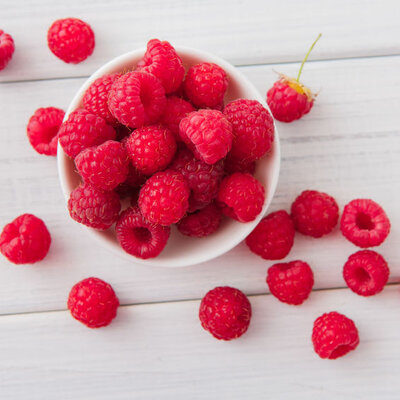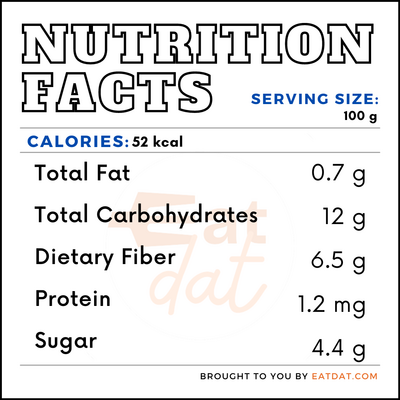
Raspberry
What is Raspberry?
A raspberry (Rubus idaeus) is the edible fruit of a plant species belonging to the rose family (Rosaceae). There are red, black, yellow, and purple varieties of this fruit. Raspberries grow on bushes and are perennial by nature.
- A raspberry can have an average of 100 to 120 seeds.
- Raspberries have a taste that can be described as both sweet and tart.
Seven common types of red raspberry include:
- Boyne
- Heritage
- Latham
- Prelude
- Bababerry
- Canby
- September
Origin of raspberry
The raspberry originated in Eastern Asia. Findings have shown that cave dwellers from the early phase of the Stone Age consumed raspberries. This fruit has been part of the human diet for centuries. It even held a significant place in Greek mythology. However, the leaves of this fruit’s plant also had their importance.
People used the leaves in herbal tea to promote digestive health. The red juice from this fruit also served as a red stain for artists during the Middle Ages. In the 1300s, King Edward I encouraged the planting of raspberries in Britain. Europeans eventually brought the raspberry plant to the Americas and continued its cultivation there. The raspberry is one of the most commonly consumed berries all over the globe.
Function
Raspberries are a great topping for yogurt or cereal. This fruit can even serve as an integral component in salads and smoothies. They are also popularly found in jellies, jams, and preserves, which can be used in a variety of savory and sweet dishes.
Nutrition
A 100g serving of this fruit contains:

This fruit has numerous health benefits. Here are some of them:
- This fruit contains compounds that can minimize the risk of heart disease and lower blood pressure.
- It can help to maintain healthy digestion and prevent constipation.
- It can assist in managing cholesterol.
- This food can reduce the risk of developing type 2 diabetes.
- It contains antioxidants that can protect the body against cancer.
Commercial production
Red raspberries germinate well in deep and adequately drained soil. They also do well in places with warm days, cool nights, and dry summers. However, the site’s slope should not be too steep. The soil pH should fall between 6.0 and 6.5. Furthermore, this fruit requires proper irrigation from time to time.
Weed control is also necessary for a raspberry plantation. Insects, pests, and diseases should also be controlled as they destroy raspberry plantations. When raspberries are ripe for harvest, they should be solid, properly colored, and smooth. If this fruit is appropriately harvested, it will be good for several days. Bear in mind, raspberries have a short shelf life compared to other fruits.
About 400,000 to 500,000 tons of raspberries are produced every year. Russia is the largest producer of this fruit. They produce 164,602 tons of this fruit annually.
Application
Don’t wash these berries, if you are not ready to eat them immediately. Washing them can cause them to damage faster. This fruit can last for five days in the fridge. To store these berries, put the unwashed berries into a container. Then, enclose them in a damp paper towel before placing the container in the refrigerator.
One way to store raspberries long-term is to freeze them. To freeze this fruit, first wash the berries and place them on a paper towel to extract excess moisture. Then, place the berries in an airtight plastic ziplock bag and put them in the freezer. This way, they can last for 10 to 12 months.
Raspberry recipes
Raspberries’ flavors can compliment many dishes. Here are some recipes to try:
- Summer Fresh Raspberry Pie
- Pistachio-Rose Shortbread Squares
- Rhubarb and Raspberry Hand Pies
- Meringue Sundae with Peppery Berry Sauce
- Raspberry Crumble Bars
FDA regulation
The Food and Drug Administration classifies this fruit as a raw agricultural commodity. The body controls the production, planting, and harvesting of this product. The FDA also has a standard of identity for canned raspberries. The organization defines these canned berries as food prepared from the raspberry varieties conforming to the characteristics of Rubus idaeus L.
References
“Raspberries.” Old Farmer’s Almanac, Old Farmer’s Almanac, www.almanac.com/plant/raspberries.
Megan, Ware. “Raspberries: Health Benefits, Nutrition, Tips, and Risks.” www.medicalnewstoday.com, Medical News Today blog, 17 Oct. 2019, www.medicalnewstoday.com/articles/283018.
“CFR – Code of Federal Regulations Title 21.” accessdata.fda.gov, U.S Food & Drug Administration, 1 Apr. 2019, https://www.accessdata.fda.gov/scripts/cdrh/cfdocs/cfcfr/CFRSearch.cfm?fr=112.1&SearchTerm=raspberry
